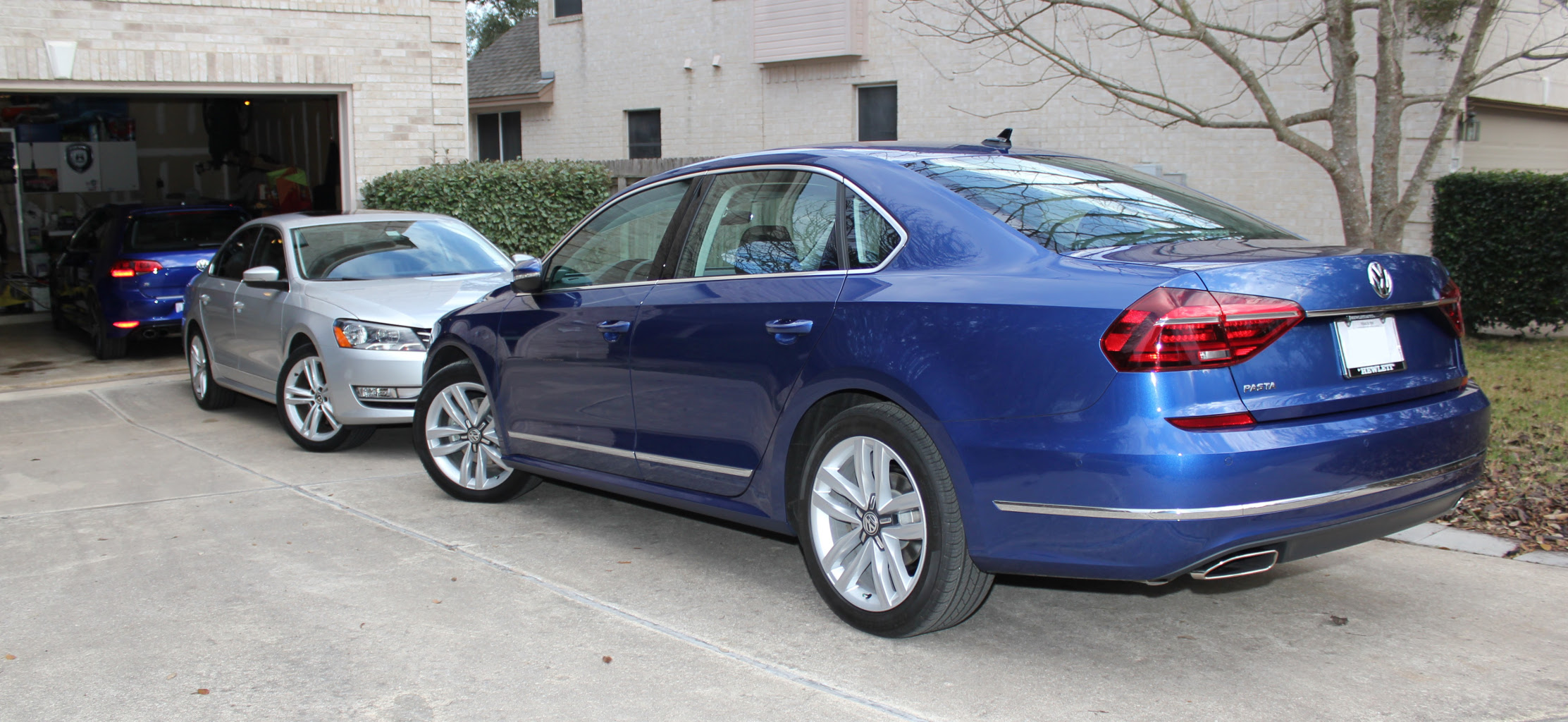2017 Passat VR6

We took advantage of factory rebates on 2017 models and VW’s generous TDI buy-back program of our 2013 Passat resulting from the infamous Dieselgate scandal of 2015. I was certain we were going to keep the TDI pretty much forever because it makes such an excellent long-distance road-tripper. But the TDI money was simply too good to pass. Between the low miles and SEL Premium trim, the buy-back fully paid for this 2017 VR6 upgrade. (Taxes, fees and a pre-paid maintenance package increased our out-the-door beyond the buy-back.)
The 3.6L VR6 has almost double the horsepower and even slightly more torque than the 2.0L diesel. The suspension feels a bit tighter and more controlled. And the direct-shift gearbox (DSG) tuning loses the lag the TDI unit displayed. The peppy response and free revving of the naturally aspirated gasoline motor makes the aggressive sport shift mode much more useful. The compromise for all the added acceleration performance is a significant drop in fuel economy. I used to regularly achieve 44-48 mpg on my morning commute. I consider it a good day to get 28-30 mpg on the same route in the VR6. I predict the VR6 will soon be replaced by a 2.0T with similar output and better economy. (Actually, I really wish I could have gotten a Passat with the Golf R powertrain including 4Motion. And a hatch.)
Of course the powertrain is entirely limited by the lousy front wheel drive (FWD) layout. When weight (“normal force” in the friction equation) transfers off the drive wheels under heavy acceleration, the tires spin, causing the various levels of the Electronic Stability Control (ESC), Anti-Slip Regulation (ASR) and Electronic Differential Lock (EDL) to cut in, reducing torque to the slipping tire. That is to say “reducing,” not invasively “eliminating” like the ASR in our old B5.5 Passat used to do. The best acceleration is had with a little slip. But it’s still pretty embarrassing making that much tire noise with so little acceleration.
Inside the Passat is still a limousine for the price of a mid-size. The back seat provides more than 39 inches of legroom luxury. An HVAC vent is routed to the rear and up-level trim in the facelift adds seat heaters to the back. Class-leading, quality materials and finish continue as with other VW interiors.
The other advantage this trade brought us was an upgrade to the mid-model “facelift” updates applied to the 2016 model. I describe the differences in the comparison page.